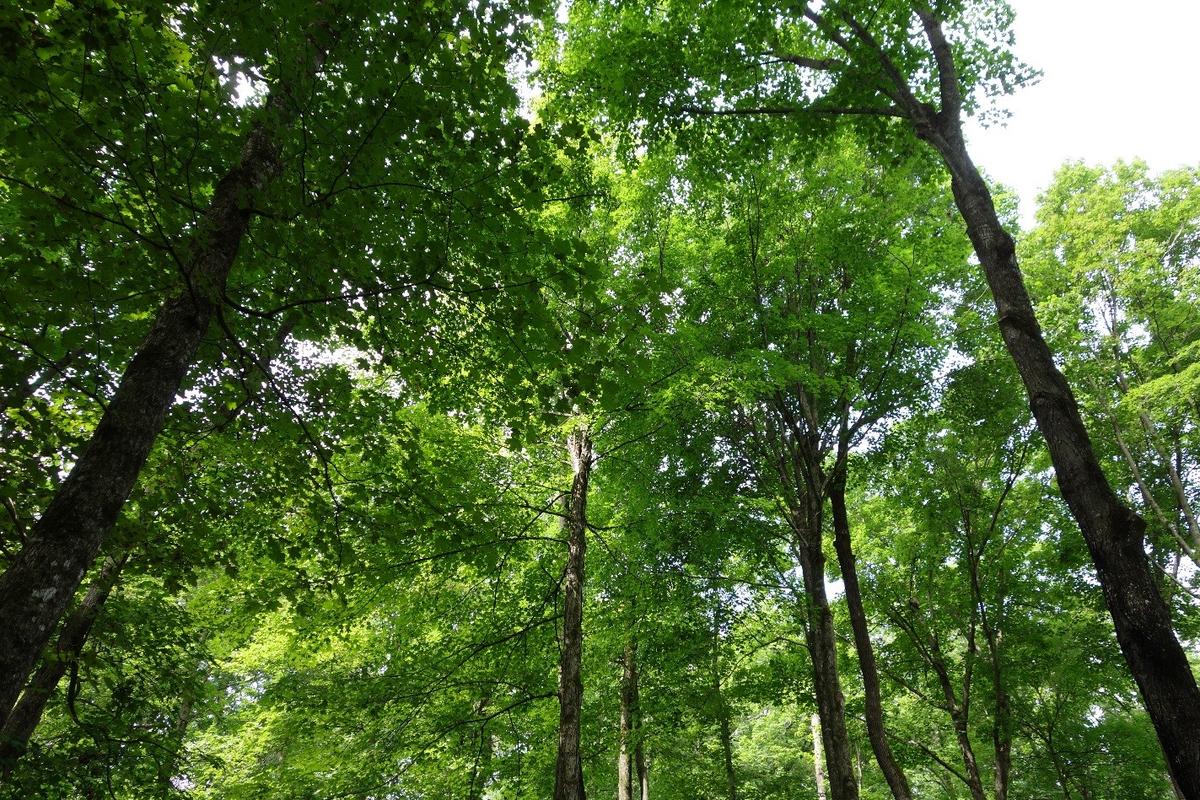Overview
This case study documents results of 2006 underplanting and a 2008 small gap harvest in a northern hardwoods forest type and mesic oak-basswood forest plant community. Some of the impacts are discernable now, and some will need to be assessed by future data gathering and updates.
Before the tree planting and gap harvest activity, the stand was cover-typed in the DNR forest inventory as maple-basswood, with a significant oak component as well as modest volumes of a mixture of other hardwoods. The stand is 10 total acres in size, of which about 3 acres are in harvested gaps.
The timber harvest and tree planting silvicultural work has resulted in a healthy, multi-aged northern hardwoods stand with overstory gaps continuing to fill in with regeneration over time. The gaps and underplanting have enabled regeneration of a small component of mid-tolerant hardwoods including oak. The resultant diversity has important benefits for climate change and forest health resiliency, wildlife habitat and timber value for the future stand.
Management guidance in the study area was provided by the Minnesota DNR 2005 High Biodiversity Addendum to Blufflands/Rochester Plateau Subsection Plan.

Figure 1: 2019 color infrared aerial photo showing case study stand (blue border) and surrounding area
Silviculture Objectives
- Maintain the maple-basswood native plant community including a regenerated component of oak while retaining a diverse shrub layer and maintaining or increasing the diversity of native plants in the herbaceous layer.
- Maintain rare species populations.
- Develop a multi-aged stand structure.
- Improve timber quality and value.
- Maintain or improve wildlife habitat.
Pre-treatment stand description and condition
Pre-treatment species composition
Sugar maple, basswood and red oak were the dominant pre-treatment canopy trees (Table 1 and Table 3). Sugar maple dominated the regeneration layer of seedlings and saplings under 1 inch DBH (Table 2). Smaller numbers of a variety of additional hardwood species were also present in the over- and mid-story, including white oak, ash, and American elm.
Table 1: 1996 CSA Forest Inventory Main Species Volumes - Stand 39. Volumes are separated by product class.
Species | Average DBH (Inches) | Volume per acre |
Sugar Maple | 16+ | 1.6 MBF |
Northern Red Oak | 11 | 4 Cords |
Bur Oak | 10 | 4 Cords |
Bigtooth Aspen | 11 | 4 Cords |
Misc. Hardwoods | 11 | 4.3 Cords |
Misc. Hardwoods | 16+ | 3.1 MBF |
Table 2: 1996 CSA Forest Inventory Understory Trees - Stand 39
Species | Average Size (DBH, Inches) | Stems/ac. |
Sugar Maple | <1 | 2,500 |
Ironwood | <1 | 500 |
Miscellaneous | <1 | 500 |
Table 3: 2007 Timber Sale Appraisal Species and Volume Estimates
Species | Product | Quantity | Unit of Measure |
Red Oak | Sawtimber | 99.30 | MBF |
Basswood | Sawtimber | 61.60 | MBF |
Trembling Aspen | Sawtimber | 20.00 | MBF |
Sugar Maple | Sawtimber | 16.10 | MBF |
White Oak | Sawtimber | 12.90 | MBF |
Ash | Sawtimber | 7.10 | MBF |
American Elm | Sawtimber | 2.10 | MBF |
Black Cherry | Sawtimber | 0.70 | MBF |
Black Walnut | Sawtimber | 0.70 | MBF |
Butternut | Sawtimber | 0.40 | MBF |
Bitternut Hickory | Sawtimber | 0.20 | MBF |
Total Sale Acres 31.6
Note: The timber sale volumes listed on this appraisal included both the small gap harvest of this study, as well as another 21.6 acres of adjacent clearcut with reserves harvest. The table is intended to give the reader an idea of the relative abundance of the species mix on the site, not the exact timber volumes.
Pre-treatment forest health issues
None noted at time of harvest appraisal.
Landowner objectives/situation
Management guidance for the Partridge Creek parcel was provided in the MN DNR 2005 High Biodiversity addendum to the Blufflands / Rochester Plateau Subsection Plan. MN DNR determined management of this site should focus on the site as a whole, employ practices that perpetuate endangered, threatened, or special concern species, and native plant communities while following the mandates of forestry or wildlife administered lands.
Silviculture prescription
The following series of treatments were implemented:
Treatment | Date | Description | Acres Treated |
Tree planting
| Spring 2006
| Underplant seedlings at approximately 425 stems/acre total. Species planted:
| 7 |
Small Gap Thinning Harvest | 2008 | Harvest of trees to produce canopy gaps of sizes varying from one tree to approximately 1/6th acre (or ~96 foot diameter) in size. This resulted in canopy gaps on about 3 total acres of the 10 acre harvest area. Frozen ground harvest to protect plants. | 10 |
What actually happened during the treatment
- The timber sale was defaulted on due to downturn in timber markets after being originally sold. It was re-sold to a new buyer after being returned to the state by the original purchaser. Otherwise things went pretty much as planned.
- Ecological and Water Resources (EWR) staff spent one day in the field helping to mark the stand for harvest.
Post-treatment assessment
The timber harvest and tree planting silvicultural work has resulted in a healthy, multi-aged northern hardwoods stand with overstory gaps continuing to fill in with regeneration over time.
See Table 4 and Table 5. The species with the greatest basal area in the overstory are sugar maple, basswood and red oak. The species with the greatest abundance and distribution of regeneration is sugar maple, by far. There are also components of regeneration of several desirable mid-tolerant species, including red and white oak, black walnut and black cherry in overstory gaps.
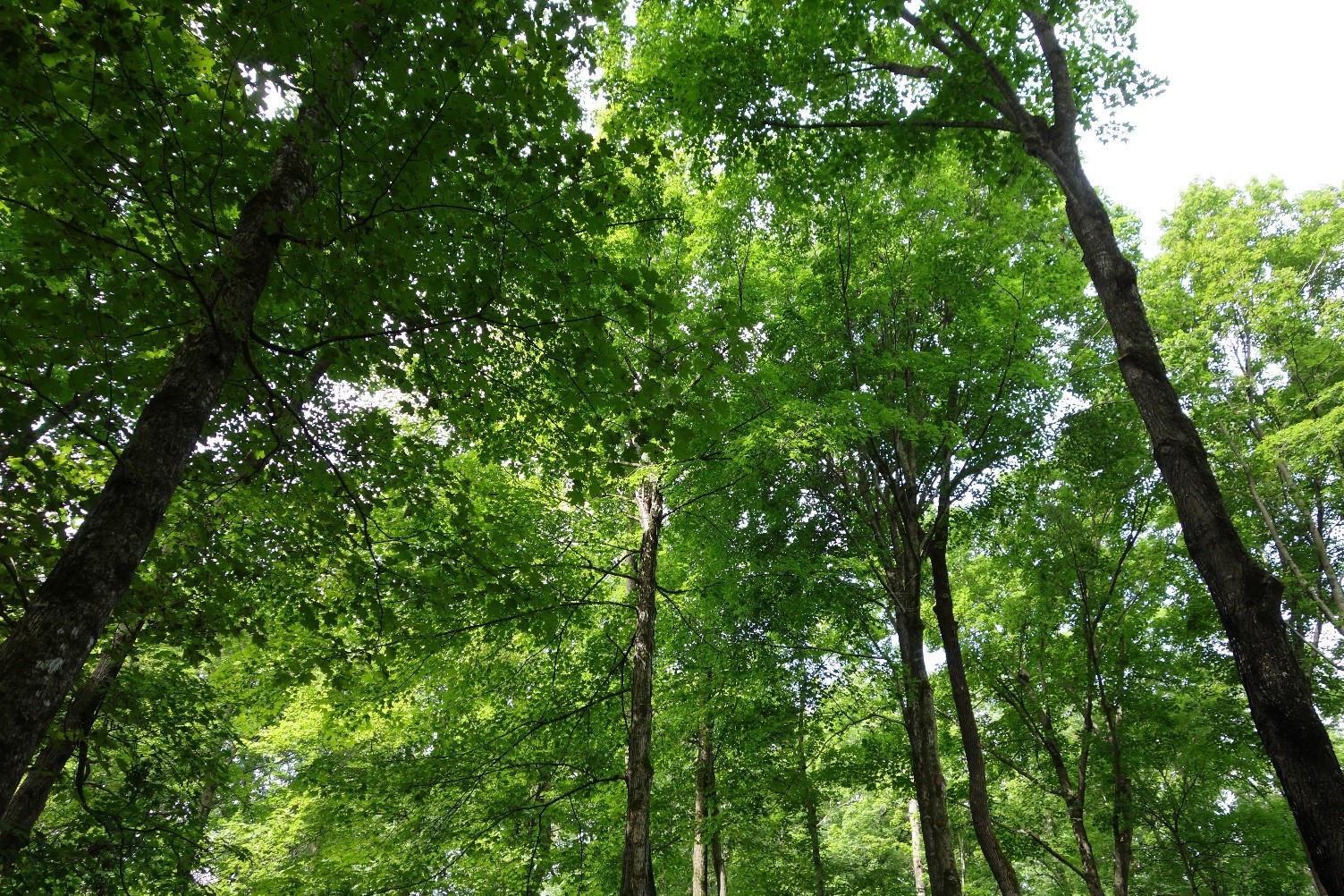
Figure 2: As of 2023, the stand had a multi-aged structure with some variable sized overstory gaps
Table 4: Tree species BA and Frequency on Plots in 2019 for stems >5” DBH. Note: 12 growing seasons after harvest, all of these trees greater than 5” DBH are harvest residuals, not new regeneration post-harvest.
Species | BA (ft2) | Frequency |
Sugar maple | 31.2 | 94% |
Basswood | 31.2 | 100% |
Red Oak | 10.0 | 35% |
Ironwood | 1.8 | 18% |
Ash | 6.5 | 41% |
Bitternut Hickory | 0.6 | 6% |
Black Walnut | 1.2 | 12% |
Bur Oak | 0.6 | 6% |
Total BA: | 83.1 |
|
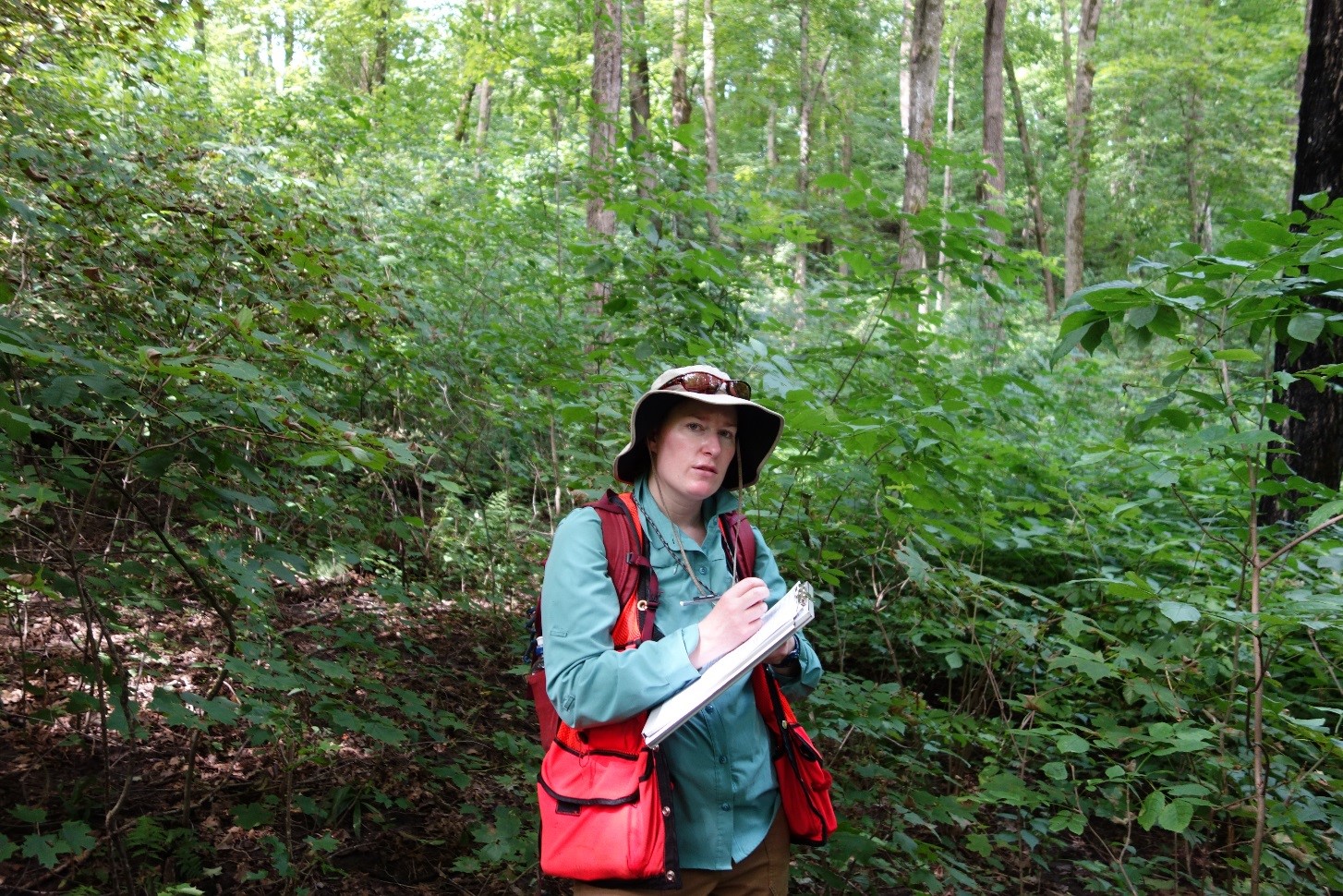
Figure 3: Regeneration and understory plants in an overstory gap in 2020
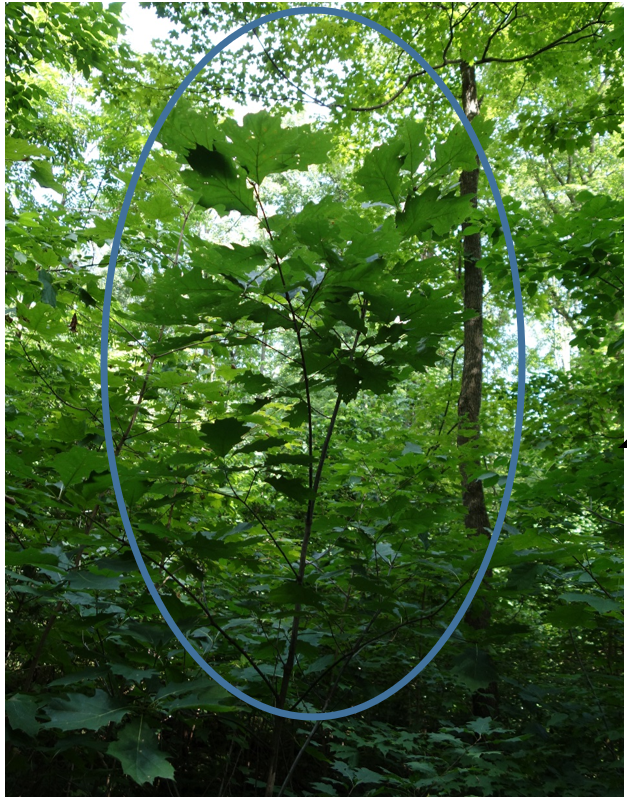
Figure 4: There are some oak saplings present in overstory gaps as of 2023
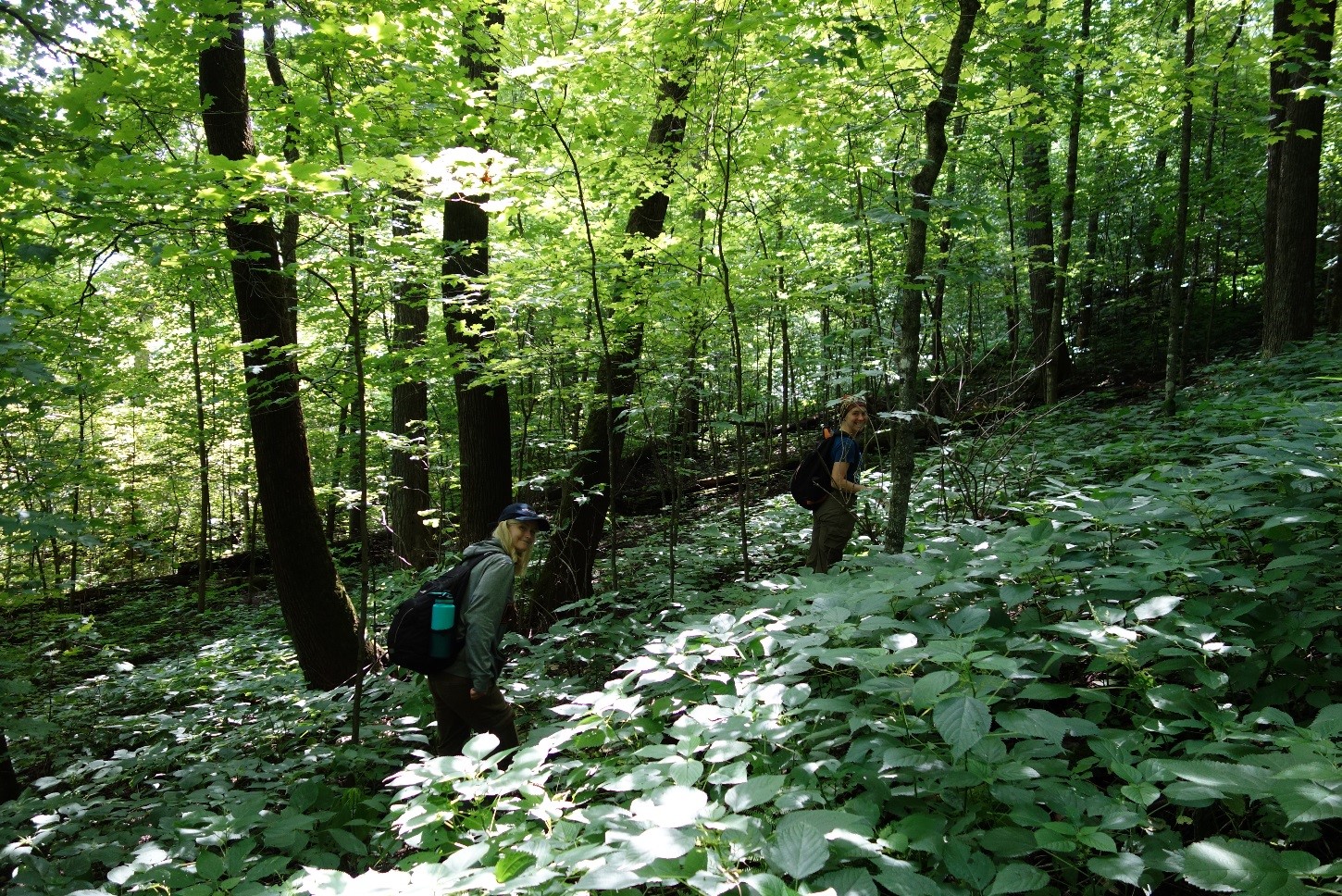
Figure 5: Heavy nettle ground cover was present in some places in the understory in 2020
The harvest gaps and underplanting have enabled regeneration of a component of mid-tolerant hardwoods including oak.
See Table 5. There are components of regeneration of several desirable mid-tolerant species in the overstory gaps, including red and white oak, black walnut and black cherry. The resultant diversity has important benefits for climate change and forest health resilience, wildlife habitat and timber value for the future stand.
Table 5: Tree regeneration density and frequency on plots in 2019. Note: Mid to low shade-tolerant crop tree species are noted in bold font.
Size Class | < 1’ tall | ≥1’ tall and < 1” DBH | 1” to 3” DBH | 3” to 5” DBH | ||||
Species | Stems/ Acre | Freq | Stems/ Acre | Freq | Stems/ Acre | Freq | Stems/ Acre | Freq |
Ash | 1,706 | 71% | 3,353 | 65% | 29 | 6% | 0 | 0% |
Basswood | 0 | 0% | 0 | 0% | 0 | 0% | 0 | 0% |
Bitternut Hickory | 588 | 24% | 706 | 47% | 0 | 0% | 12 | 12% |
Black Cherry | 0 | 0% | 59 | 6% | 0 | 0% | 0 | 0% |
Black Walnut | 0 | 0% | 59 | 6% | 0 | 0% | 6 | 6% |
Boxelder | 59 | 6% | 59 | 6% | 0 | 0% | 0 | 0% |
Butternut | 0 | 0% | 59 | 6% | 0 | 0% | 0 | 0% |
Elm | 353 | 18% | 471 | 12% | 0 | 0% | 12 | 12% |
Ironwood | 59 | 6% | 353 | 12% | 0 | 0% | 18 | 12% |
Red Oak | 118 | 12% | 529 | 18% | 0 | 0% | 0 | 0% |
Sugar Maple | 38,529 | 94% | 5,412 | 71% | 176 | 29% | 12 | 0% |
White Oak | 0 | 0% | 59 | 6% | 0 | 0% | 0 | 0% |
Total Stems/Acre | 41,412 |
| 11,119 |
| 205 |
| 60 |
|
We plan to maintain a small component of oak and black walnut in the future stand with some periodic release work of seedlings in overstory gaps.
There will be benefits to wildlife (mast production), climate change and forest health resiliency (greater species diversity), and timber value from this release work.
The composition and species diversity of herbaceous plants and shrubs 12 years post-harvest seems within normal range of variation for the native plant community.
See Supplemental figures 3 through 6 for ECS worksheets containing plant lists for this site. The composition and abundance of species diversity of herbaceous plants and shrubs 12 years post-harvest appears to be within normal range of variation for the native plant community, based on personal observations by the authors of other sites within this NPC.
Invasive Species
We did find a small amount of European guelder rose (Viburnum opulus), garlic mustard and buckthorn (see Table 6 for data on buckthorn found on regeneration sample plots), which is pretty typical for this type of site in this part of the state. This site does have a high level of recreation use, which can impact introduction of non-native species.
Table 6: Buckthorn stems/acre and plot frequency by size class in 2019
Size Class | < 1’ tall
| ≥1’ tall and < 1” DBH
| 1” to 3” DBH
| 3” to 5” DBH | ||||
Species | Stems/ Acre | Freq | Stems/ Acre | Freq | Stems/ Acre | Freq | Stems/ Acre | Freq |
Buckthorn | 176 | 12% | 176 | 12% | 0 | 0% | 0 | 0% |
Plans for Future Treatments
- Monitor the stand through periodic inventory surveys.
- Release some of the oak and black walnut regeneration to maintain a component of these species in the stand.
- Monitor invasives during field work and control any high priority species if necessary.
Costs and economic considerations
Costs
Tree planting: $ 64/ac. (2006 dollars)
Staff time for timber sale setup and administration: $ 100/ac. (2008 dollars)
TOTAL COSTS $ 164/ac.
Revenue:
Timber revenue 2008 $ 1,635/ac.
TOTAL REVENUE: $ 1,635/ac. (2008 dollars)
Other notes
Summer Interns Amelia Knoll and Alex Love spent many hours gathering and helping to analyze data in the summer of 2020.
We had review and editing help from MNDNR Silviculture Program Consultant Mike Reinikainen.
This case study was developed with support from the United States Department of Agriculture's National Institute for Food and Agriculture, Renewable Resources Extension Act. Project #2021-46401-35956, principal investigator Eli Sagor, University of Minnesota.
Summary
The timber harvest and tree planting silvicultural work has resulted in a healthy, multi-aged northern hardwoods stand with overstory gaps continuing to fill in with regeneration over time.
The harvest gaps and tree planting have enabled regeneration of a wide range of species common to the plant community, including small component of mid-tolerant hardwoods including oak.
The resultant diversity has important benefits for climate change and forest health resiliency, wildlife habitat (mast production) and timber value for the future stand.
We plan to maintain a small component of oak and black walnut in the future stand with some periodic release work of seedlings in overstory gaps.
There will be benefits to wildlife (mast production), climate change and forest health resiliency (greater species diversity), and timber value from this release work.
The composition and abundance of species diversity of herbaceous plants and shrubs 12 years post-harvest appears to be within normal range of variation for the native plant community.
Supplemental content
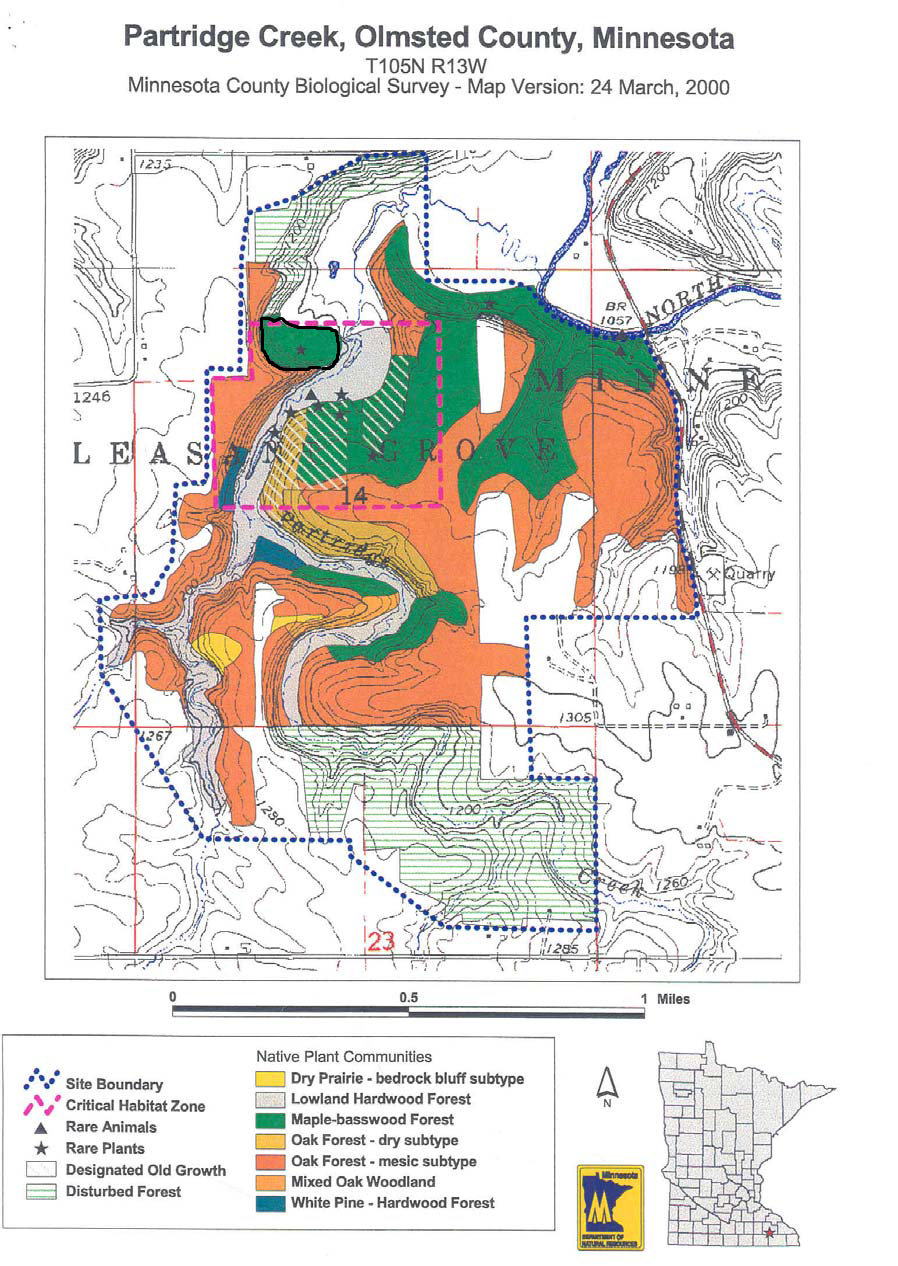
Supplemental figure 1: Native Plant Community Map. Approximate study boundary shown with black border. Source: MN DNR 2005 High Biodiversity addendum to Blufflands/Rochester Plateau Subsection Plan.
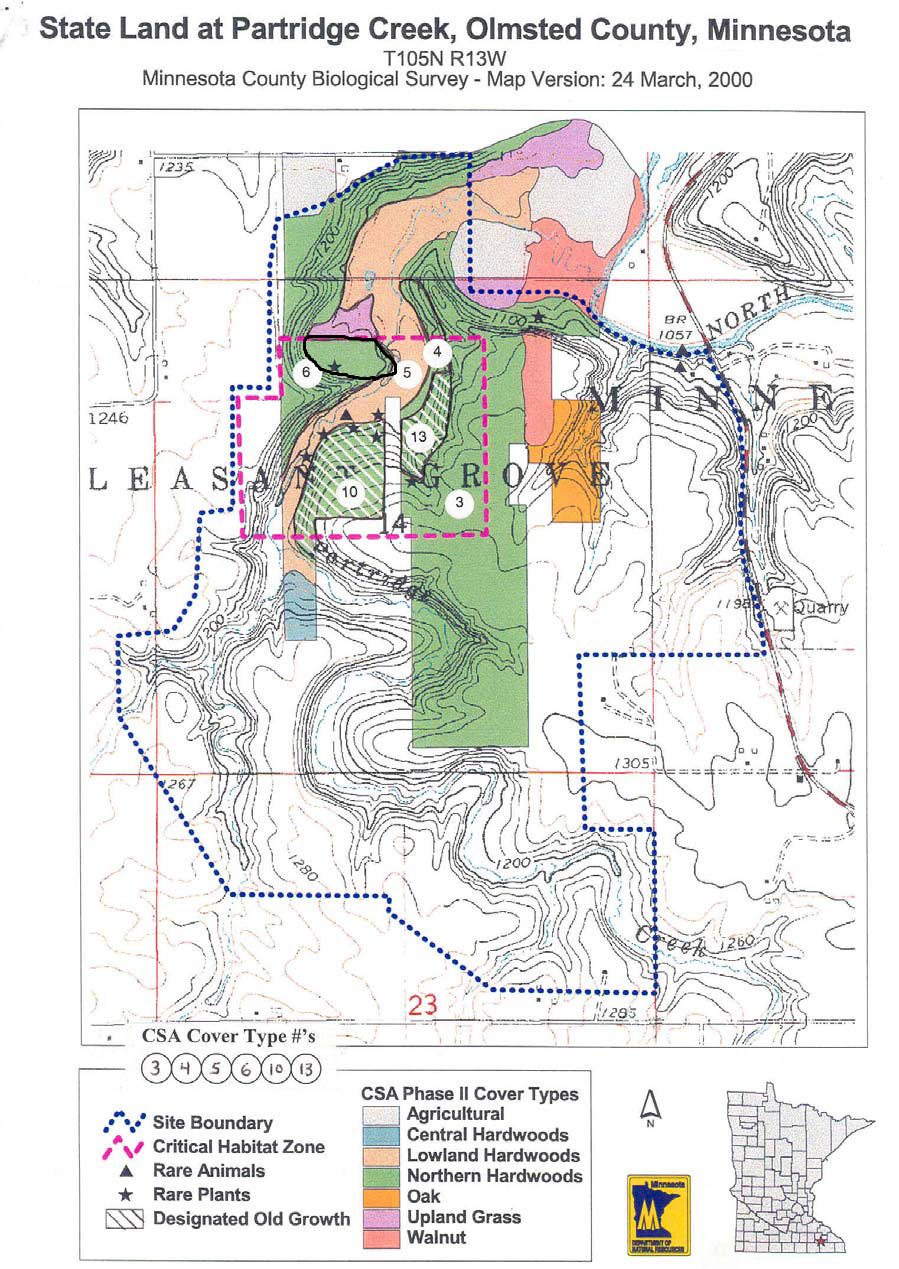
Supplemental figure 2: Map of Selected CSA Forest Inventory Cover Types for Partridge Creek Unit. Approximate study boundary shown with black border. Source: MN DNR 2005 High Biodiversity addendum to Blufflands/Rochester Plateau Subsection Plan.

Supplemental figure 3: June 2019 Native Plant Community Worksheet, Page 1
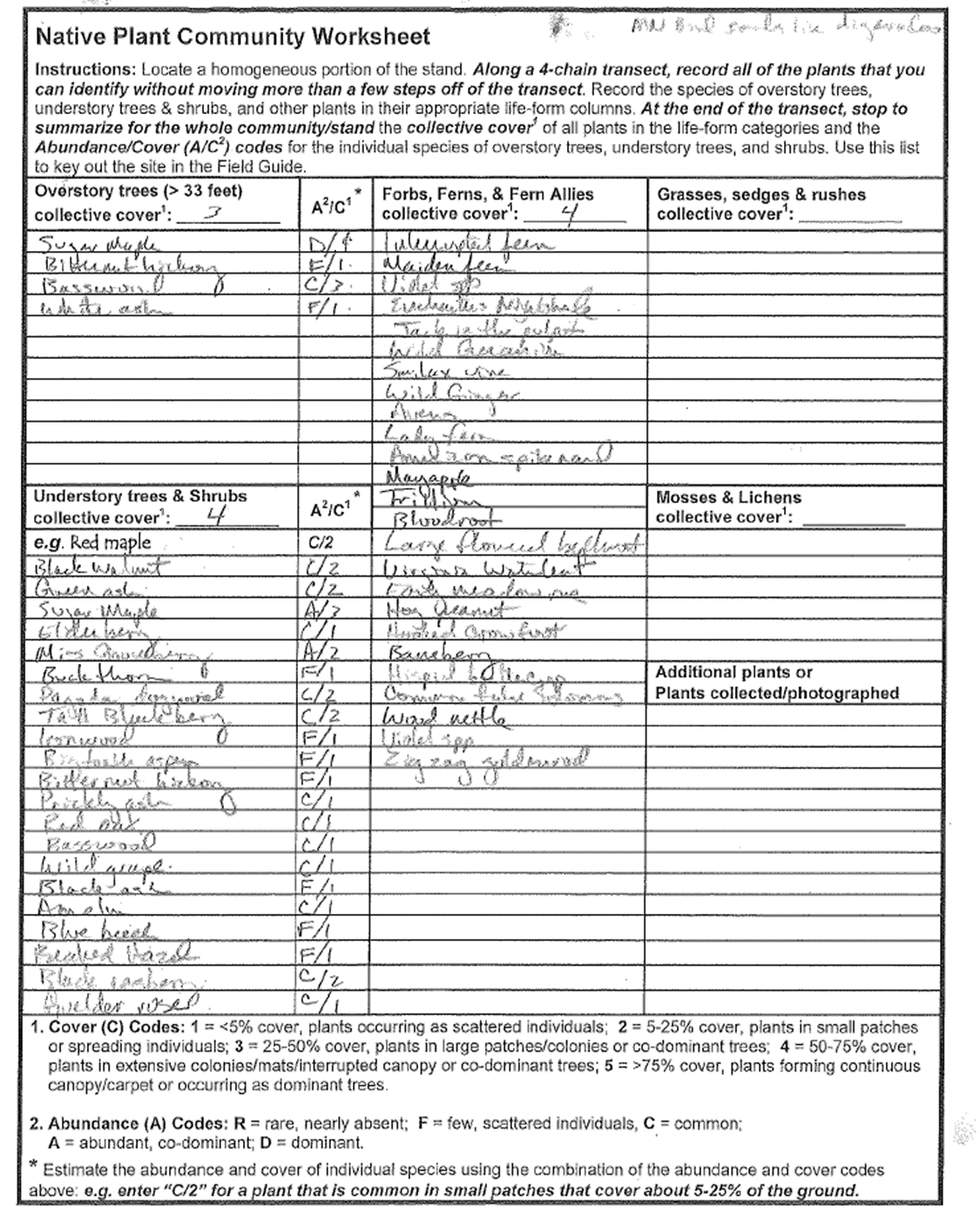
Supplemental figure 4: June 2019 Native Plant Community Worksheet, Page 2

Supplemental figure 5: July 2019 Native Plant Community Worksheet, Page 1
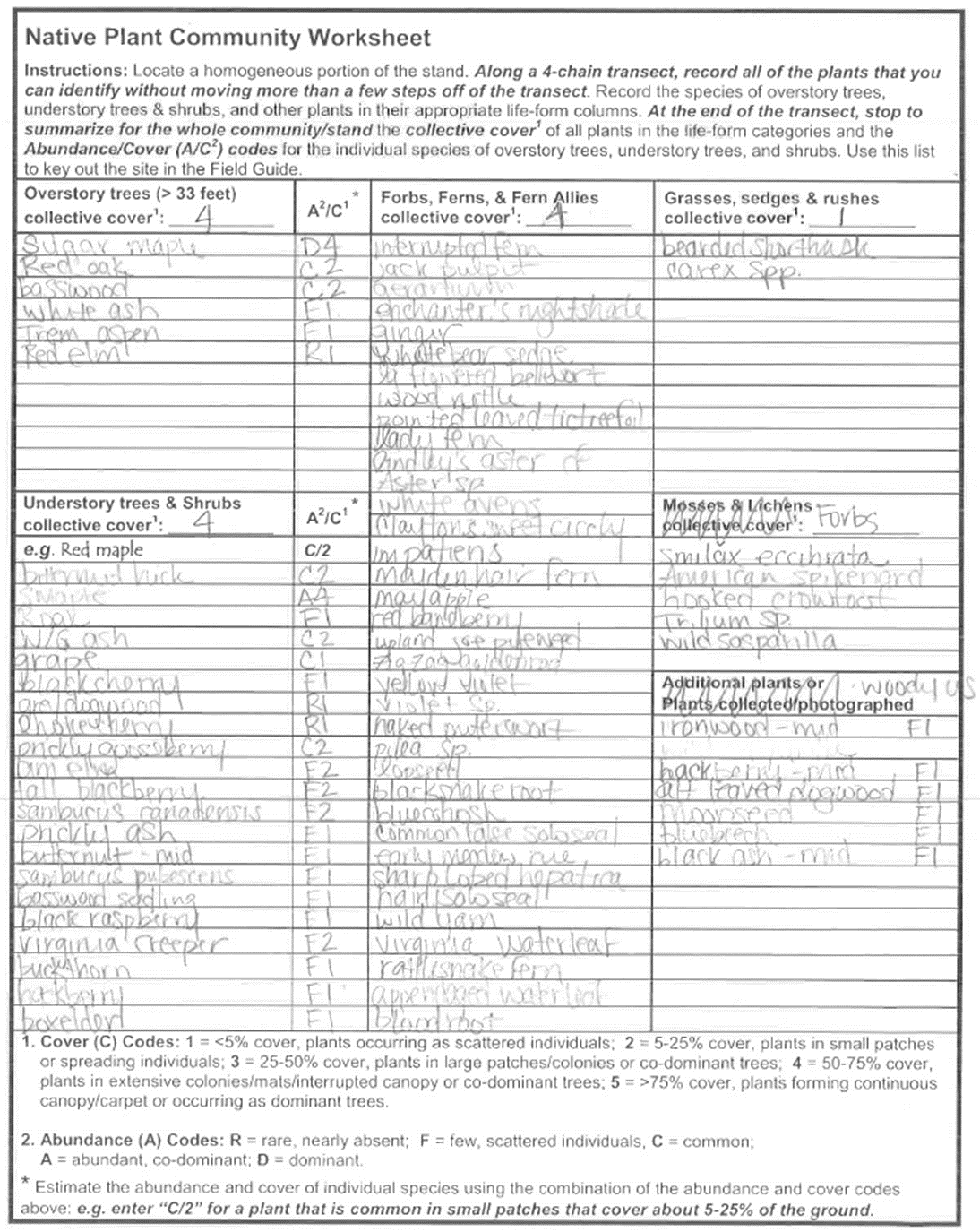
Supplemental figure 6: July 2019 Native Plant Community Worksheet, Page 2
